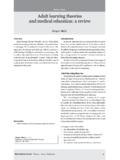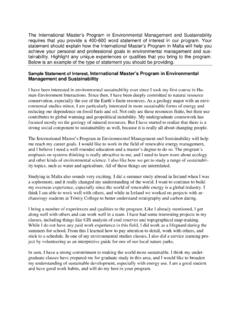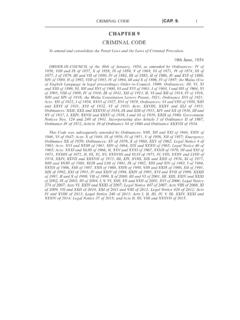Transcription of Harvard Referencing Style - University of Malta
1 Harvard Referencing Style Guidelines University of Malta Library Outreach Department Email: Last updated: 17 October 2019. Table of Contents 1. Referencing .. 1. Why should I reference? .. 1. What should I reference? .. 1. What is plagiarism? .. 1. What is a Reference Management Software? .. 1. 2. Examples of references .. 2. In-text 2. One author .. 2. Two or more authors .. 2. Unknown author .. 3. Group authors .. 3. Unknown date .. 3. Multiple works of the same author in the same 3. Citing more than one source in the same reference .. 4. Secondary Referencing .. 4. Personal communication .. 4. Final list of references/ bibliography.
2 5. One author .. 5. Multiple authors .. 5. Same author, different year .. 5. Same author, same year .. 6. Same first author, different co-authors .. 6. Different authors, same surname .. 6. No author .. 6. Books .. 6. Chapter in a book .. 7. Journal articles .. 7. Website .. 7. Computer programs .. 7. Non-text material .. 8. Audio and video 8. Unpublished 9. Legal documents .. 9. Government publications .. 9. 3. Managing your references .. 10. 10. 4. Further help .. 10. 5. Useful sources .. 10. 1. Referencing Referencing is the process of providing detailed information on all sources consulted to compile an article, book chapter, essay or dissertation both within the text (in-text citations).
3 And at the end of your work (reference list or bibliography). This will allow readers to easily locate the original sources and consult them. Why should I reference? Referencing is important as it shows the reader that you have researched the subject widely and adds weight to your arguments by supporting them with relevant literature. It also separates your ideas/results from someone else's findings by giving credit to the authors of the cited works. Referencing shows the credibility and quality of resources used and helps you avoid plagiarism. What should I reference? You should reference all sources that you cited in your text (reference list) as well as sources used to prepare the writing (bibliography).
4 What is plagiarism? Plagiarism is a term used when an author either purposely or unintentionally presents someone else's work as if it is his/her own work. Therefore, using other people's ideas/works without citing the sources is considered as plagiarism. Always remember that if you are quoting, paraphrasing or summarising someone else's work, you always need to acknowledge the source. Be careful of self-plagiarism. Using your previously submitted work without acknowledging it is also considered as a form of plagiarism. Plagiarism is treated very seriously and results in disciplinary action. What is a Reference Management Software? A reference management software allows you to collect, store, organise, add notes, link (to full-text, web pages and documents), cite, and create bibliographies in your preferred reference Style .
5 When using RefWorks select Harvard British Standard Style . 1. 2. Examples of references Harvard is an author-date citation Style where sources are cited in the text and the list of references is organised in alphabetical order by the author's last name. In-text references In-text references require the surname of the author and the year of publication. There is no comma between the Author's Last Name and the Year: (Author's Last Name Year). If you need to include a page number, add it after the year: (Author's Last Name Year, p. x OR pp. x-z). One author There is nothing either good or bad, but thinking makes it so (Shakespeare 1992).
6 OR. In his tragedy, William Shakespeare (1992) writes . Two or more authors When citing a work with two authors, include both names: (Smith, Brown 2014). OR. Smith and Brown (2014). For three or more different authors include names of first two and type words et al. instead of the other names: (Borg, Camilleri et al. 2004). (Borg et al. 2004). 2. Unknown author In case when the author is unidentified, use the title of the publication in italics. When citing the source for the first time, use full title: (The Tragedy of Hamlet, Prince of Denmark 1992). For every subsequent citation you may abbreviate the title: (Hamlet 1992). Group authors When citing group authors (such as government agencies, organisations, associations, corporations, etc.)
7 For one time only, provide the group name and the date: (World Health Organization 2008). If you need to cite this work more than once, add an abbreviation in your first citation in square brackets: (World Health Organization [WHO] 2008). For every subsequent citation, use the abbreviation only: (WHO 2008). Unknown date If there is no date available, write : (Borg ). OR. In his article, Borg ( ) mentions . Multiple works of the same author in the same year References by the same author published in the same year are distinguished by adding lowercase letters next to the year: (Smith 2006a). (Smith 2006b). 3. Citing more than one source in the same reference When you want to cite more than one source at the same time, place citations in parentheses in alphabetical order by the first author's surname.
8 Make sure to separate the citations with commas: (Borg 2004, Camilleri 1999). Secondary Referencing Always try to cite the primary (original) source of information. However, if this is impossible, provide the secondary source. For example, if Borg cited a work written by Smith and you did not read Smith's work, start by mentioning the original work and indicate that it was cited in the secondary source: Smith (2004 cited in Borg 2007, p. 4) claims that . OR. An excellent point with regards to recycling (Smith 2004 cited in Borg 2007) states Personal communication Personal communication includes electronic communication (emails, messages, bulletins, etc.)
9 , letters, interviews and phone conversations. Personal communication should be cited in-text only by providing the first letter of the name, full surname of the communicator and full date. Between year and date write pers. comm. : (B Martin 1999, pers. comm. 3 May). 4. Final list of references/ bibliography The list of references/bibliography is organised in alphabetical order by the author's last name. Author's names should be written in capital letters, followed by the year of publication. One author In Harvard Style , the references list should be arranged in alphabetical order by author's surname followed by initials. BORG, C., 2017.
10 CAMILLERI, Z., 2013. Multiple authors In case of two authors, write both names starting with surname, followed by initial and connect them with and: GODWIN, P. and PARKER, J., 2012. Information literacy . Where there are more authors, write down all names and place and before the last surname: FREE, C., PHILLIPS, G., GALLI, L., WATSON, L., FELIX, L., EDWARDS, P., PATEL, V. and HAINES, A., 2013. The Effectiveness of Mobile-Health . Same author, different year In case of several works by the same author, arrange the publications by year starting from the latest. BORG, C., 2017. BORG, C., 2006. BORG, C., 2003. 5. Same author, same year Publications written by the same author in the same year should be arranged in alphabetical order by title and distinguished by placing a lowercase letter (a, b, c ).














